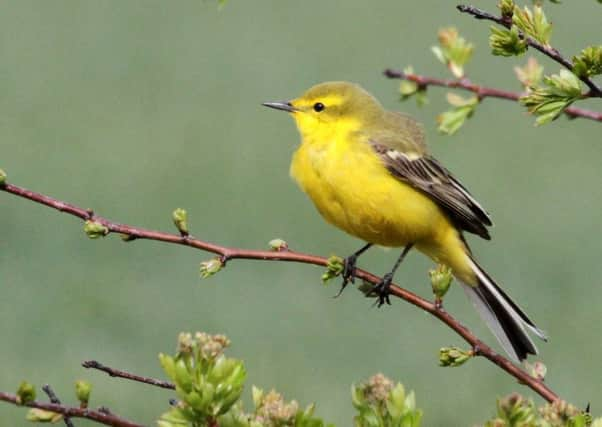Birdwatch: Little shepherdess is attractive returnee


The males are particularly eye catching, their bright dandelion coloured upperparts extending to just above the eye, darker wings edged with white and tail almost black with white outer tail feathers.
They are often seen running between the feet of grazing sheep and cows snatching up the insects disturbed by the livestock. As a result the French call the yellow wagtail the “little shepherdess.”
Advertisement
Hide AdAdvertisement
Hide AdThey are among the earliest of the spring migrants, returning here after spending the winter on the lush pasturelands of the Gambia.
The race that we see almost exclusively here is flavissima which is also widespread across Europe but there are at least 12 other races and sometimes a few of these turn up here too.
Last weekend black-headed and blue headed wagtails were seen on the same day at the Swillington Ings reserve, Leeds.
The black-headed race, feldegg, is found in south-east Europe. So far there has not been a confirmed sighting of one in Yorkshire - one reported briefly at Filey in May 2013 was not accepted by the British Birds Rarities Committee.
Advertisement
Hide AdAdvertisement
Hide AdThe blue-headed, with a smart cornflower-blue cap and white eyestripe is a more regular sighting as it breeds in western Europe from southern Scandinavia south to northern Iberia and east to the Balkans. The occasional pair has also bred in this country.
The flavissima race now breeds alongside blue-headed wagtails in parts of Norway, France and Netherlands and hybridisation between the two has resulted in the so-called Channel wagtail which has a paler hood.
Numbers of breeding yellow wagtails in this country have declined by 65 per cent since the 1970s due to a loss of habitat such as hay meadows and they are amber listed as a species of conservation concern.
But in recent years numbers seem to have stabilised and they have found new places to nest including potato fields where the loose canopy of leaves gives them both easy access and concealment of nests.
Advertisement
Hide AdAdvertisement
Hide AdThey can also nest at the edges of oil seed rape fields where there are plenty of insects.
The wettest winter on record has also left large areas of damp muddy pasture which should also be ideal for them.
Strong easterly winds brought a big movement of little gulls inland across England among them 46 at Bank Island in the Lower Derwent Valley near York and smaller numbers calling in at most lakes and reservoirs across the county. The first Arctic terns were also seen on passage north.
Other migrants seen included common redstarts, whimbrels, whitethroats, lesser whitethroats and a cuckoo at Hatfield Moors, South Yorkshire while black redstarts were reported along the Yorkshire coast with three at Flamborough.
Ring ouzels on their way back to upland breeding sites were seen at Fairburn Ings and Heslington East lake, York.